Abstract: When the main valve of the thermal power unit steam-water system leaks, it will cause steam and water loss, waste resources, reduce the economics of the unit, and the valve will burst due to long-term leakage, which will bring harm to the ready-made workers of the equipment. Therefore, timely detection of valve leakage is very important for the economic and safe operation of the group. This paper analyzes the current main detection methods, and conducts a theoretical analysis of the heat transfer-based detection method, which can realize the quantitative calculation of the online valve leakage and judge the valve leakage state.
Key words: valve leakage detection Preface Valve is the most common and widely used thermal equipment in power plants. Valve leakage and faults directly harm the economics of power plants. At present, there are many problems in the valve of the power plant. Among them, the valve is not tightly closed, which causes the leakage of the working fluid, and the adjustment performance of some of the hydrophobic adjustment doors is not good, so the problem that the heater is not hydrophobic according to the design of the normal pipeline operation is more prominent. The position of the valve in the system is different, the probability of leakage and the impact on the economics of the unit are different; in general, the main steam pipe of the steam turbine, the exhaust steam pipe of the high pressure cylinder, the hot reheat steam pipe, the high pressure cylinder body Hydrophobic valves, due to poor working conditions, have a high probability of leakage, and have a great impact on the economics of the unit; some of the valve leakage is small, but the power plant is continuously operated for a long time, and it will cause a small loss. .
1. Valve internal leakage detection method 1.1 Current inspection methods At present, domestic and international methods for valve leakage inspection mainly include manual inspection method, ultrasonic inspection technology, and vibration analysis detection method.
Manual monitoring: relying on people's feelings and experience, judging the lack of scientific basis; acoustic detection: valve leakage is a jet process, accompanied by jet noise; thermodynamic monitoring: leakage of working fluid through the wall and insulation heat exchange, leading to the wall The temperature rises; the more the leakage, the higher the temperature; these detection methods have the advantages of high positioning accuracy and low false alarm rate, and the leakage of the valve is obvious, and the internal leakage of the valve is complicated, because the leak cannot be found in time. Online monitoring is not possible.
1.2 Heat leak-based valve internal leak detection method When the valve is normally closed, the temperature inside the tube will gradually decrease due to the heat dissipation valve. For the venting valve, the temperature is lowered to the ambient temperature; for the non-empty door, the temperature is reduced to the saturation temperature corresponding to the post-valve pressure, and if the post-valve pressure corresponds to a saturation temperature lower than the ambient temperature, the temperature is lowered to the ambient temperature.
When there is a leak in the valve, there is a working fluid flowing above the ambient temperature in the pipe. The working fluid in the pipe will dissipate heat through the pipe wall and the heat insulation layer. The heat is transferred from the inner working fluid of the pipe to the outside air, mainly including the convective heat transfer of the working fluid inside the pipe and the inner wall of the pipe Φ1, the heat conduction of the inner wall of the pipe and the outer wall of the pipe Φ2 The thermal conductivity of the thermal insulation layer Φ3, the convective radiation heat exchange Φ4 process of the outer surface of the thermal insulation layer and the environment. Due to heat dissipation, the temperature drop along the length of the tube and the wall of the tube gradually decrease. There is also a temperature difference along the length of the tube. There is also heat conduction along the length of the tube in the tube wall, but the amount of heat conduction is relatively small. Ignorable.
Where: ― convective heat transfer between the working fluid inside the pipe and the inner wall of the pipe;
― heat conduction between the inner wall of the pipe and the outer wall of the pipe;
― heat conduction of the insulation layer;
― Convective radiation heat transfer between the outer surface of the insulation layer and the environment;
H—convection heat transfer coefficient;
A—heat exchange area;
Tf - working temperature;
Tw - wall temperature;
Ta-ambient temperature;
-Thermal Conductivity;
D—tube diameter;
For a section of pipeline according to the energy balance, the heat Φ emitted by the lowering of the working temperature should be equal to the heat lost from the wall.
Where t', t" are the inlet and outlet temperatures of the working fluid for this section; qm - mass flow of working medium; cp - specific heat of working medium.
When the amount of leakage is constant, after a period of time, the heat transfer process tends to be stable Φ1 = Φ2 = Φ3 = Φ4 = Φ. The temperature distribution of the working fluid and the wall of the pipe remains unchanged. At this time, there is a one-to-one correspondence between the amount of leakage and the temperature of the working fluid in the pipe. Using this relationship, we can calculate the amount of leakage by measuring the temperature. The temperature to be measured includes the temperature inside the valve (or wall temperature), the temperature before the valve, and the ambient temperature.
2. Classification and causes of valve leakage At present, the main causes of internal leakage of valves in China are roughly divided into two cases, internal leakage and external leakage.
2.1 Valve internal leakage and cause analysis At present, the newly developed butterfly valve in China has changed from the original flat seal to the tapered seal, that is, the oblique conical elliptical sealing surface, the valve seat and the circular elastic seal mounted on the butterfly material. The rings together form a seal pair, wherein the seal ring can be radially floated within the slots of the disc. The principle of the improvement is: when the medium flows through the pipe, the valve needs to be closed. At this time, the elastic sealing ring will first contact the short shaft in the elliptical sealing surface, and then, under the rotation of the valve stem, the sealing ring is gradually pushed to the inside. The pressure is used to contact the elastic ring with the long axis of the oblique conical surface, and finally the entire contact between the elastic sealing ring and the elliptical sealing surface is completed. Since the sealing of the new butterfly valve is deformed by the elastic ring, the valve body is Or when the medium is at a low temperature to produce a volume change, the pressure on the sealing surface is absorbed and compensated by the elastic sealing ring, so that the sealing surface is not bent and the leakage and the jamming phenomenon are avoided. When the production needs to open the valve, the elastic deformation of the sealing surface disappears immediately due to the instantaneous release of the pressure, and no friction occurs during the closing and opening process, which prolongs the service life of the valve and reduces the failure of the replacement valve. Necessary expenses.
2.2 Valve leakage and causes There are two main reasons for valve leakage.
2.2.1 When the flange connection between the valve and the pipe of the production system is used, the shrinkage between the materials will be asynchronous due to the gasket, connecting bolt and connecting piece used for the connection at low temperature, resulting in slack in the seal. , which in turn leads to leakage. Therefore, at present, in order to prevent the valve from leaking out, the connection mode of the valve body and the pipe is changed from the flange connection mode to the welding connection mode, thereby avoiding the leakage phenomenon caused by the low temperature.
2.2.2 There is a leak at the stem and packing. In the production system, F4 filler has better self-sliding performance, relatively low coefficient of friction and good chemical stability. Therefore, most valves are made of F4. However, passing the long-term production and use, it is found that F4 filler is also insufficient. One is that the cold flow tends to be large; the other is that the coefficient of linear expansion is large. At low temperatures, the F filler will shrink, causing leakage of the medium, and because the temperature is below zero degrees Celsius, causing a large amount of ice at the valve stem, causing the valve to rotate slowly or even fail. To this end, China's newly developed low temperature butterfly valve makes full use of the characteristics of the F4 filler, and the space can be kept at room temperature in any temperature environment by the reserved space gap to prevent the leakage of the valve.
In this paper, the internal leakage is mainly studied and studied, and corresponding measures are proposed according to its causes and influencing factors.
3. Conclusion At present, the methods of valve leakage inspection at home and abroad mainly include manual inspection method, ultrasonic inspection technology, and vibration analysis detection method. These detection methods have high positioning accuracy and low false alarm rate, but they have limitations - they cannot be found in time, and online monitoring cannot be achieved. Based on the principle of heat transfer, combined with the operating parameters such as temperature as an external leak detection method, the quantitative calculation of the leakage amount of the online valve can be realized, and the valve leakage state can be judged and recorded. When the valve leaks, the automatic warning, remind the special workers and the inspection personnel to pay attention to, provide convenience for timely maintenance of the leakage accident, minimize economic loss and resource waste, avoid environmental pollution and safety accidents, and have important significance. .
References [1] Lu Shounan. Discussion on valve leakage detection method[J].Guangdong Chemical Industry,2011,38(6):210,193
[2] Chang Haifang. Valve leakage management is promising [J]. Electric Power Safety Technology, 2009, 11 (5): 57-59
[3] Wang Yanfei, editor. "Installation, use and maintenance of valves" JJG49-1999 National Quality Supervision Bureau [4] Zhang Xianying, editor. "Oilfield Special Project Management" JJG52-2002 Discussion on Engineering Management of Network Oilfields [5] Liang Jian, Fang Yongshun, Sun Xiaoyu.Design of Nuclear Power Valve Based on Quality Control Perspective[J].黑龙江科技信æ¯,2015(8):88.
[6] Chen Wenan, Ma Shangguo. Quality Control of Valve Installation in Nuclear Power Plant Construction [J]. Urban Construction Theory Research: Electronic Edition, 2012 (21).
[7] Wei Peng, Wang Zhe, Qi Jianghai. Witnessing the Control Point of Nuclear Grade Valve Quality Plan[J]. Modern Corporate Culture, 2014(23): 79.
Key words: valve leakage detection Preface Valve is the most common and widely used thermal equipment in power plants. Valve leakage and faults directly harm the economics of power plants. At present, there are many problems in the valve of the power plant. Among them, the valve is not tightly closed, which causes the leakage of the working fluid, and the adjustment performance of some of the hydrophobic adjustment doors is not good, so the problem that the heater is not hydrophobic according to the design of the normal pipeline operation is more prominent. The position of the valve in the system is different, the probability of leakage and the impact on the economics of the unit are different; in general, the main steam pipe of the steam turbine, the exhaust steam pipe of the high pressure cylinder, the hot reheat steam pipe, the high pressure cylinder body Hydrophobic valves, due to poor working conditions, have a high probability of leakage, and have a great impact on the economics of the unit; some of the valve leakage is small, but the power plant is continuously operated for a long time, and it will cause a small loss. .
1. Valve internal leakage detection method 1.1 Current inspection methods At present, domestic and international methods for valve leakage inspection mainly include manual inspection method, ultrasonic inspection technology, and vibration analysis detection method.
Manual monitoring: relying on people's feelings and experience, judging the lack of scientific basis; acoustic detection: valve leakage is a jet process, accompanied by jet noise; thermodynamic monitoring: leakage of working fluid through the wall and insulation heat exchange, leading to the wall The temperature rises; the more the leakage, the higher the temperature; these detection methods have the advantages of high positioning accuracy and low false alarm rate, and the leakage of the valve is obvious, and the internal leakage of the valve is complicated, because the leak cannot be found in time. Online monitoring is not possible.
1.2 Heat leak-based valve internal leak detection method When the valve is normally closed, the temperature inside the tube will gradually decrease due to the heat dissipation valve. For the venting valve, the temperature is lowered to the ambient temperature; for the non-empty door, the temperature is reduced to the saturation temperature corresponding to the post-valve pressure, and if the post-valve pressure corresponds to a saturation temperature lower than the ambient temperature, the temperature is lowered to the ambient temperature.
When there is a leak in the valve, there is a working fluid flowing above the ambient temperature in the pipe. The working fluid in the pipe will dissipate heat through the pipe wall and the heat insulation layer. The heat is transferred from the inner working fluid of the pipe to the outside air, mainly including the convective heat transfer of the working fluid inside the pipe and the inner wall of the pipe Φ1, the heat conduction of the inner wall of the pipe and the outer wall of the pipe Φ2 The thermal conductivity of the thermal insulation layer Φ3, the convective radiation heat exchange Φ4 process of the outer surface of the thermal insulation layer and the environment. Due to heat dissipation, the temperature drop along the length of the tube and the wall of the tube gradually decrease. There is also a temperature difference along the length of the tube. There is also heat conduction along the length of the tube in the tube wall, but the amount of heat conduction is relatively small. Ignorable.
Where: ― convective heat transfer between the working fluid inside the pipe and the inner wall of the pipe;
― heat conduction between the inner wall of the pipe and the outer wall of the pipe;
― heat conduction of the insulation layer;
― Convective radiation heat transfer between the outer surface of the insulation layer and the environment;
H—convection heat transfer coefficient;
A—heat exchange area;
Tf - working temperature;
Tw - wall temperature;
Ta-ambient temperature;
-Thermal Conductivity;
D—tube diameter;
For a section of pipeline according to the energy balance, the heat Φ emitted by the lowering of the working temperature should be equal to the heat lost from the wall.
Where t', t" are the inlet and outlet temperatures of the working fluid for this section; qm - mass flow of working medium; cp - specific heat of working medium.
When the amount of leakage is constant, after a period of time, the heat transfer process tends to be stable Φ1 = Φ2 = Φ3 = Φ4 = Φ. The temperature distribution of the working fluid and the wall of the pipe remains unchanged. At this time, there is a one-to-one correspondence between the amount of leakage and the temperature of the working fluid in the pipe. Using this relationship, we can calculate the amount of leakage by measuring the temperature. The temperature to be measured includes the temperature inside the valve (or wall temperature), the temperature before the valve, and the ambient temperature.
2. Classification and causes of valve leakage At present, the main causes of internal leakage of valves in China are roughly divided into two cases, internal leakage and external leakage.
2.1 Valve internal leakage and cause analysis At present, the newly developed butterfly valve in China has changed from the original flat seal to the tapered seal, that is, the oblique conical elliptical sealing surface, the valve seat and the circular elastic seal mounted on the butterfly material. The rings together form a seal pair, wherein the seal ring can be radially floated within the slots of the disc. The principle of the improvement is: when the medium flows through the pipe, the valve needs to be closed. At this time, the elastic sealing ring will first contact the short shaft in the elliptical sealing surface, and then, under the rotation of the valve stem, the sealing ring is gradually pushed to the inside. The pressure is used to contact the elastic ring with the long axis of the oblique conical surface, and finally the entire contact between the elastic sealing ring and the elliptical sealing surface is completed. Since the sealing of the new butterfly valve is deformed by the elastic ring, the valve body is Or when the medium is at a low temperature to produce a volume change, the pressure on the sealing surface is absorbed and compensated by the elastic sealing ring, so that the sealing surface is not bent and the leakage and the jamming phenomenon are avoided. When the production needs to open the valve, the elastic deformation of the sealing surface disappears immediately due to the instantaneous release of the pressure, and no friction occurs during the closing and opening process, which prolongs the service life of the valve and reduces the failure of the replacement valve. Necessary expenses.
2.2 Valve leakage and causes There are two main reasons for valve leakage.
2.2.1 When the flange connection between the valve and the pipe of the production system is used, the shrinkage between the materials will be asynchronous due to the gasket, connecting bolt and connecting piece used for the connection at low temperature, resulting in slack in the seal. , which in turn leads to leakage. Therefore, at present, in order to prevent the valve from leaking out, the connection mode of the valve body and the pipe is changed from the flange connection mode to the welding connection mode, thereby avoiding the leakage phenomenon caused by the low temperature.
2.2.2 There is a leak at the stem and packing. In the production system, F4 filler has better self-sliding performance, relatively low coefficient of friction and good chemical stability. Therefore, most valves are made of F4. However, passing the long-term production and use, it is found that F4 filler is also insufficient. One is that the cold flow tends to be large; the other is that the coefficient of linear expansion is large. At low temperatures, the F filler will shrink, causing leakage of the medium, and because the temperature is below zero degrees Celsius, causing a large amount of ice at the valve stem, causing the valve to rotate slowly or even fail. To this end, China's newly developed low temperature butterfly valve makes full use of the characteristics of the F4 filler, and the space can be kept at room temperature in any temperature environment by the reserved space gap to prevent the leakage of the valve.
In this paper, the internal leakage is mainly studied and studied, and corresponding measures are proposed according to its causes and influencing factors.
3. Conclusion At present, the methods of valve leakage inspection at home and abroad mainly include manual inspection method, ultrasonic inspection technology, and vibration analysis detection method. These detection methods have high positioning accuracy and low false alarm rate, but they have limitations - they cannot be found in time, and online monitoring cannot be achieved. Based on the principle of heat transfer, combined with the operating parameters such as temperature as an external leak detection method, the quantitative calculation of the leakage amount of the online valve can be realized, and the valve leakage state can be judged and recorded. When the valve leaks, the automatic warning, remind the special workers and the inspection personnel to pay attention to, provide convenience for timely maintenance of the leakage accident, minimize economic loss and resource waste, avoid environmental pollution and safety accidents, and have important significance. .
References [1] Lu Shounan. Discussion on valve leakage detection method[J].Guangdong Chemical Industry,2011,38(6):210,193
[2] Chang Haifang. Valve leakage management is promising [J]. Electric Power Safety Technology, 2009, 11 (5): 57-59
[3] Wang Yanfei, editor. "Installation, use and maintenance of valves" JJG49-1999 National Quality Supervision Bureau [4] Zhang Xianying, editor. "Oilfield Special Project Management" JJG52-2002 Discussion on Engineering Management of Network Oilfields [5] Liang Jian, Fang Yongshun, Sun Xiaoyu.Design of Nuclear Power Valve Based on Quality Control Perspective[J].黑龙江科技信æ¯,2015(8):88.
[6] Chen Wenan, Ma Shangguo. Quality Control of Valve Installation in Nuclear Power Plant Construction [J]. Urban Construction Theory Research: Electronic Edition, 2012 (21).
[7] Wei Peng, Wang Zhe, Qi Jianghai. Witnessing the Control Point of Nuclear Grade Valve Quality Plan[J]. Modern Corporate Culture, 2014(23): 79.
Car lift crane can be used in a variety of environmental, field operations, laboratories, schools, construction, decoration and assembly lines, light trucks, vans, light trucks, heavy trucks, caravans, cars, loading docks, platforms, rescue vehicles matching use; Car lift cranesupporting alternative vehicle small jib cranes, bridges, storage and cargo handling cars and so on, set a number of advantages in one.The package of Car lift crane wooden case .
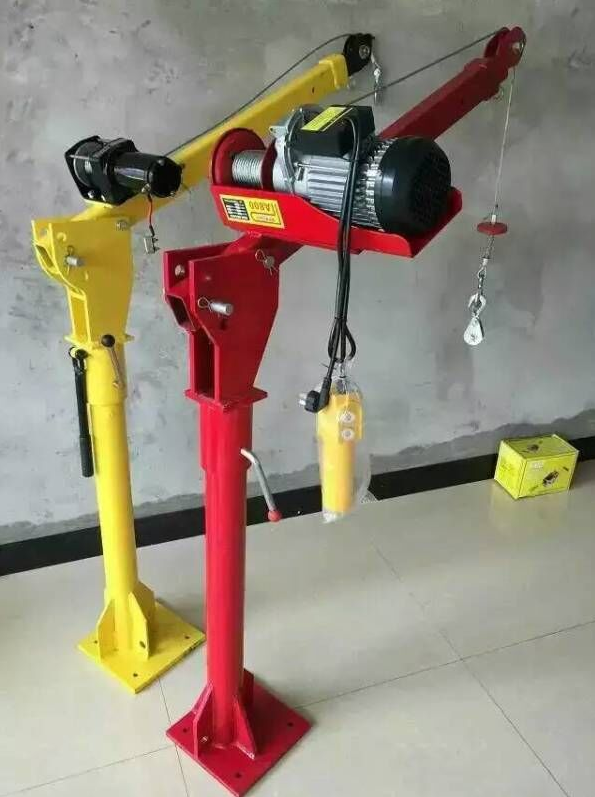
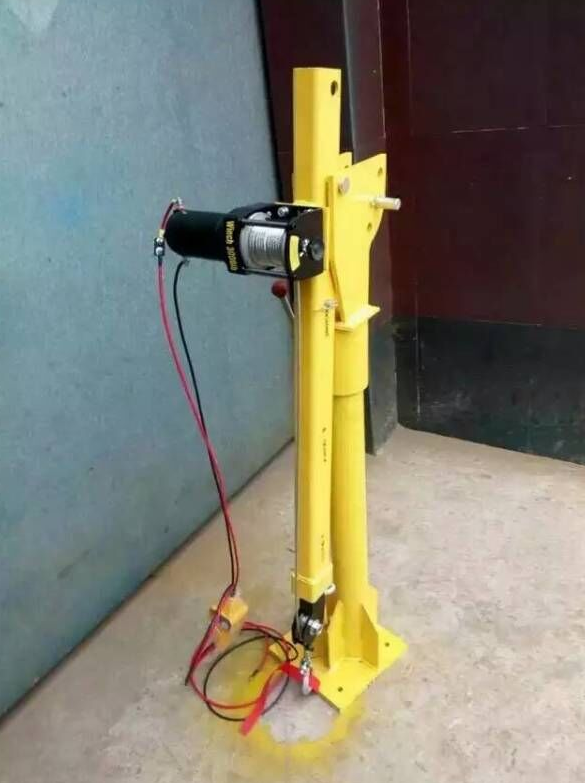

About us
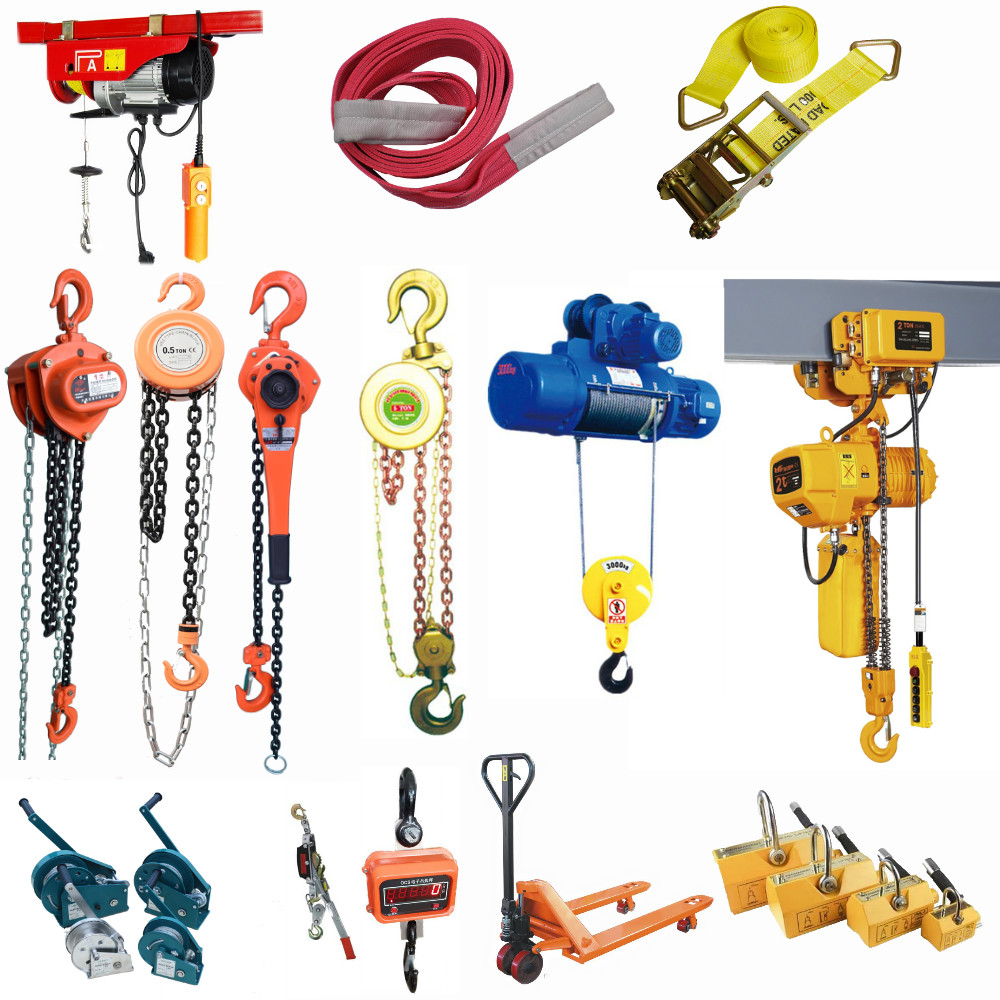
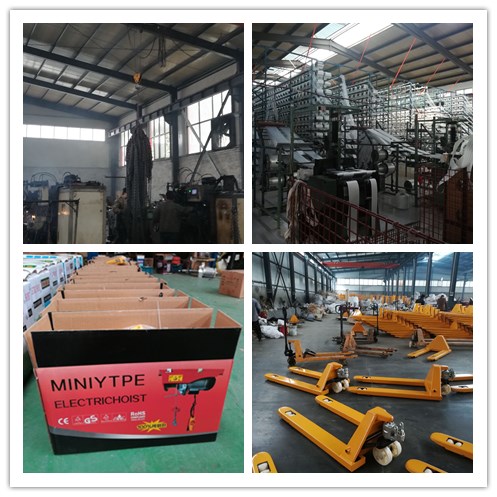
Contact us
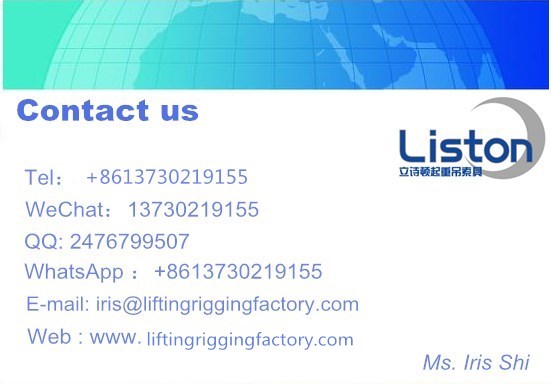
Car Lift Crane
Car Lift Crane,Car Crane Crane Lift,Car Small Lift Crane,Hydraulic Car Lift Crane
Hebei Liston Lifting Rigging Manufacturing Co., Ltd. , https://www.liftingriggingfactory.com